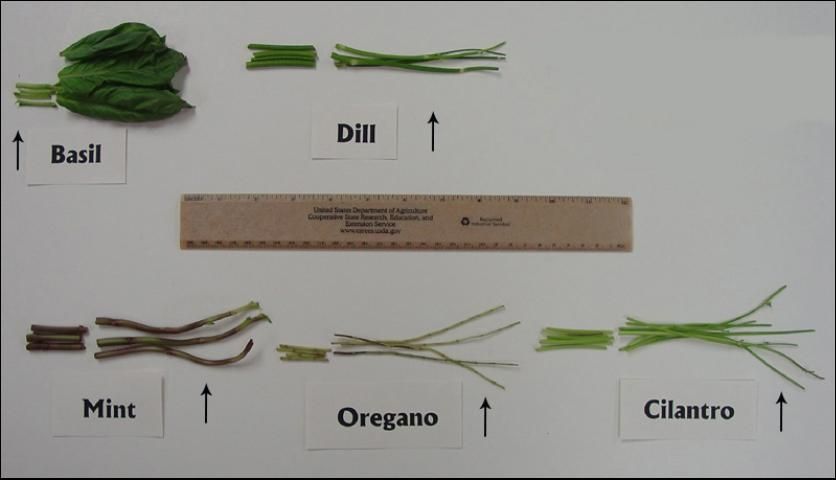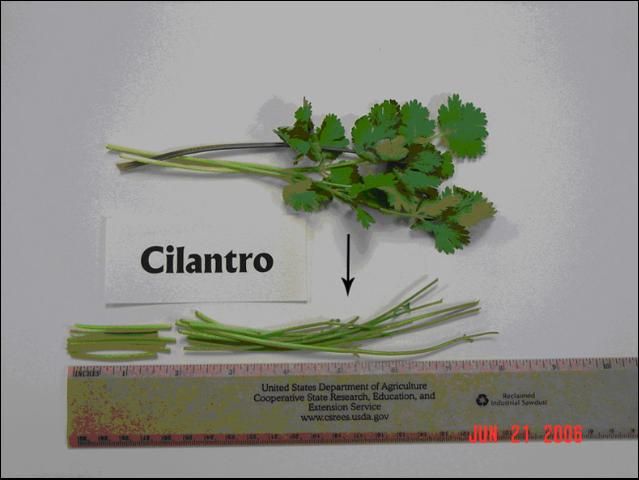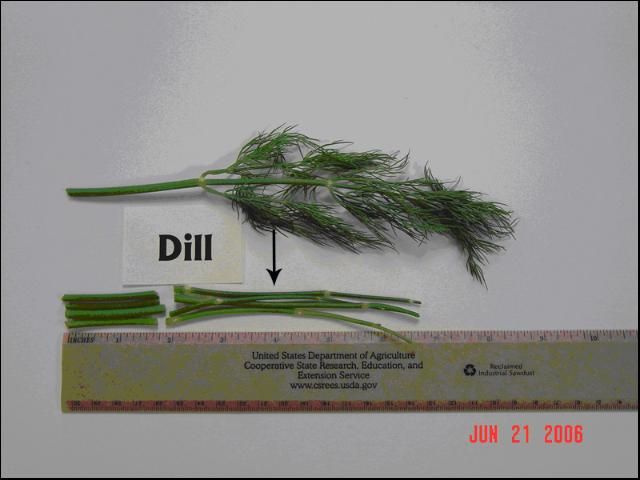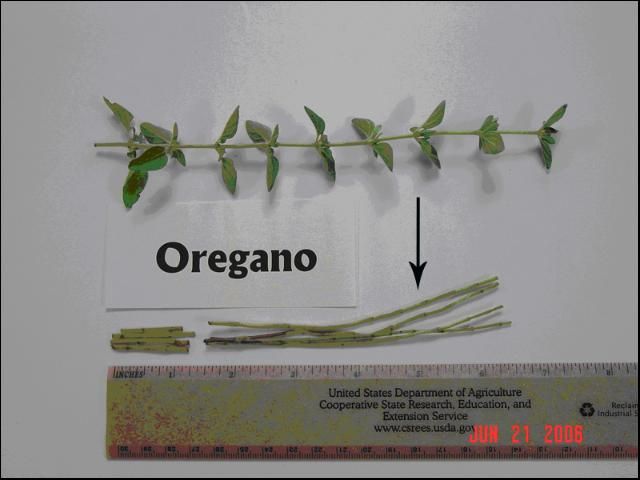"Quick test" kits have been used for testing plant sap nitrate nitrogen (NO3-N) and potassium (K). These tests have been widely used in the Florida vegetable industry since the early 1990s (Fletcher et al., 1993; Hochmuth, et al., 1988; Hochmuth, 2003; Hochmuth et al., 2003; Vann et al., 1993). The objective is to use portable testing equipment that can be taken to the field by growers to assess the nutrient status of the crop. One of the most popular "quick tests" has been the Cardy meters, one for NO3-N and one for K. A drop of plant sap is placed on calibrated electrodes and the concentration of NO3-N or K is read on a digital scale. Consult the publication entitled "Calibrating sap-testing meters" (Studstill et al., 2006) for a detailed description of how to properly use these meters.
Recent interest has increased in herbs as an alternative crop throughout Florida. Production of herbs has increased both in the field and greenhouses. Greenhouse hydroponic herb production, primarily basil, increased from near zero acres in 1988 to nearly 20 acres in 2004 (Tyson et al., 2004). Several studies with herbs have been conducted from 2000-2006 at the UF/IFAS North Florida Research and Education Center—Suwannee Valley near Live Oak, Florida (Stapleton and Hochmuth, 2001). Many of the studies evaluated various nutrient programs for producing high-quality fresh herbs using hydroponic systems. These studies provided several opportunities to document observed sap concentration of NO3-N and K in the plant sap of basil (Ocimum basilicum), cilantro (Coriandrum sativum), dill (Anethum graveolens), spearmint (Mentha spicata), and oregano (Origanum vulgare) (Table 1). These concentrations represent target nutrient levels based on repeated tests and under growing conditions that resulted in adequate yield and quality.
Sap testing is typically done on petioles because they are easily identifiable succulent organs and they yield usable volumes of sap when pressed. However, herbs may not have large identifiable petioles. Botanically, petiole is defined as "leaf stalk," petiolule as "leaflet stalk" and vein as "strand of fibrovascular tissue in a leaf or other laminar structure" (Radford et al, 1968). Hence, the plant part used to develop the target nutrient concentrations (Table 1) should be also used for routine analysis (Figures 1–6). A minimum of 20 plants should be sampled for routine analysis in order to ensure a representative sample. When a problem is suspected, take two separate samples, one from symptomatic, and one from healthy plants.

Credit: UF/IFAS

Credit: UF/IFAS

Credit: UF/IFAS

Credit: UF/IFAS

Credit: UF/IFAS

Credit: UF/IFAS
References
Fletcher, J., R. Hochmuth and G. Hochmuth. 1993. Calibration of N and K fresh sap quick-test procedures for polyethylene-mulched peppers. Proc. 24th Natl Agricultural Plastics Congr. 24:147–152.
Hochmuth, G. J., P. R. Gilreath, E. A. Hanlon, G. A. Clark, D. N. Maynard, C. D. Stanley, and D. Z. Hamon. 1988. Evaluating plant N status with plant sap quick-test kits. Proc. Tomato Institute. Fla. Coop. Ext. Serv. Spec. Series. SS-VEC 801:6–14.
Hochmuth, G. 2003. Plant Petiole Sap-Testing for Vegetable Crops. Cir 1144. Gainesville: University of Florida Institute of Food and Agricultural Sciences. https://edis.ifas.ufl.edu/CV004
Hochmuth, R., D. Dinkins, M. Sweat, and E. Simonne. 2003. Extension Programs in Northeastern Florida Help Growers Produce Quality Strawberries by Improving Water and Nutrient Management. HS-956. Gainesville: University of Florida Institute of Food and Agricultural Sciences. https://edis.ifas.ufl.edu/HS190
Radford, A.E., H.E. Ahles and C. Ritchie Bell. 1968. Manual of the vascular flora of the Carolinas, the University of North Carolina Press, Chapel Hill, N.C. 1183 pp.
Stapleton, S. C., and R. C. Hochmuth. 2001. Greenhouse production of several fresh-cut herbs in vertical hydroponic systems in north central Florida. Pro. Fla. State Hort. Soc. 114:332–334.
Studstill, D., E. Simonne, and R. Hochmuth, and T. Olczyk. 2006. Calibrating Sap-Testing Meters. HS328. Gainesville: University of Florida Institute of Food and Agricultural Sciences. http://ufdc.ufl.edu/IR00002738/00001
Tyson, R. V., R. C. Hochmuth, E. M. Lamb, E. McAvoy, and T. Olczyk. 2004. Greenhouse vegetables in Florida's mild winter climate – 2004 update. Acta Hort 654: 37–40.
Vann. C. D., R. C. Hochmuth, and G.J. Hochmuth. 1993. Watermelon N and K petiole sap testing. Proc. 1993 Watermelon Inst. Fla. Coop. Ext. Serv. Special Series SS-HOS-003.